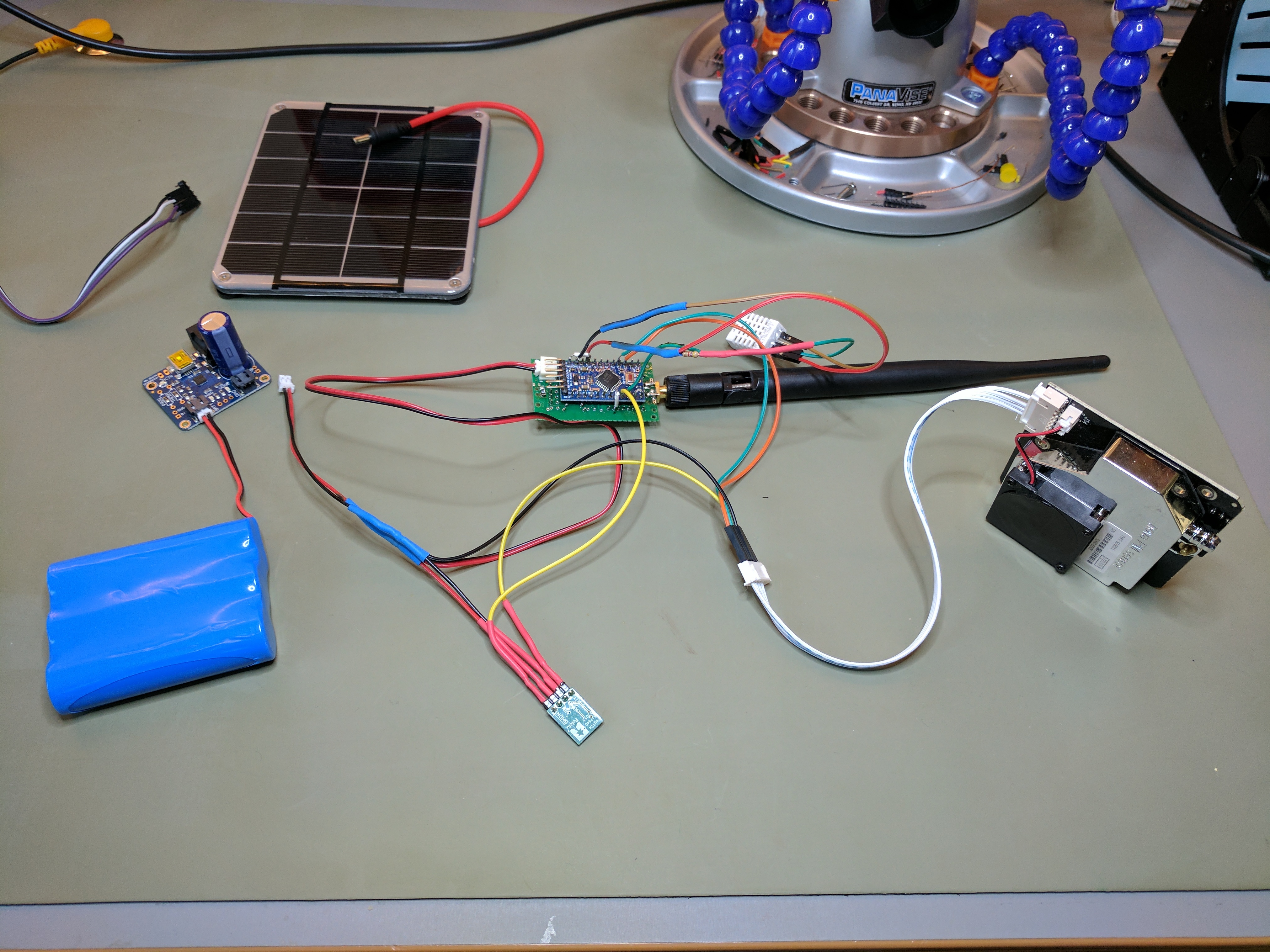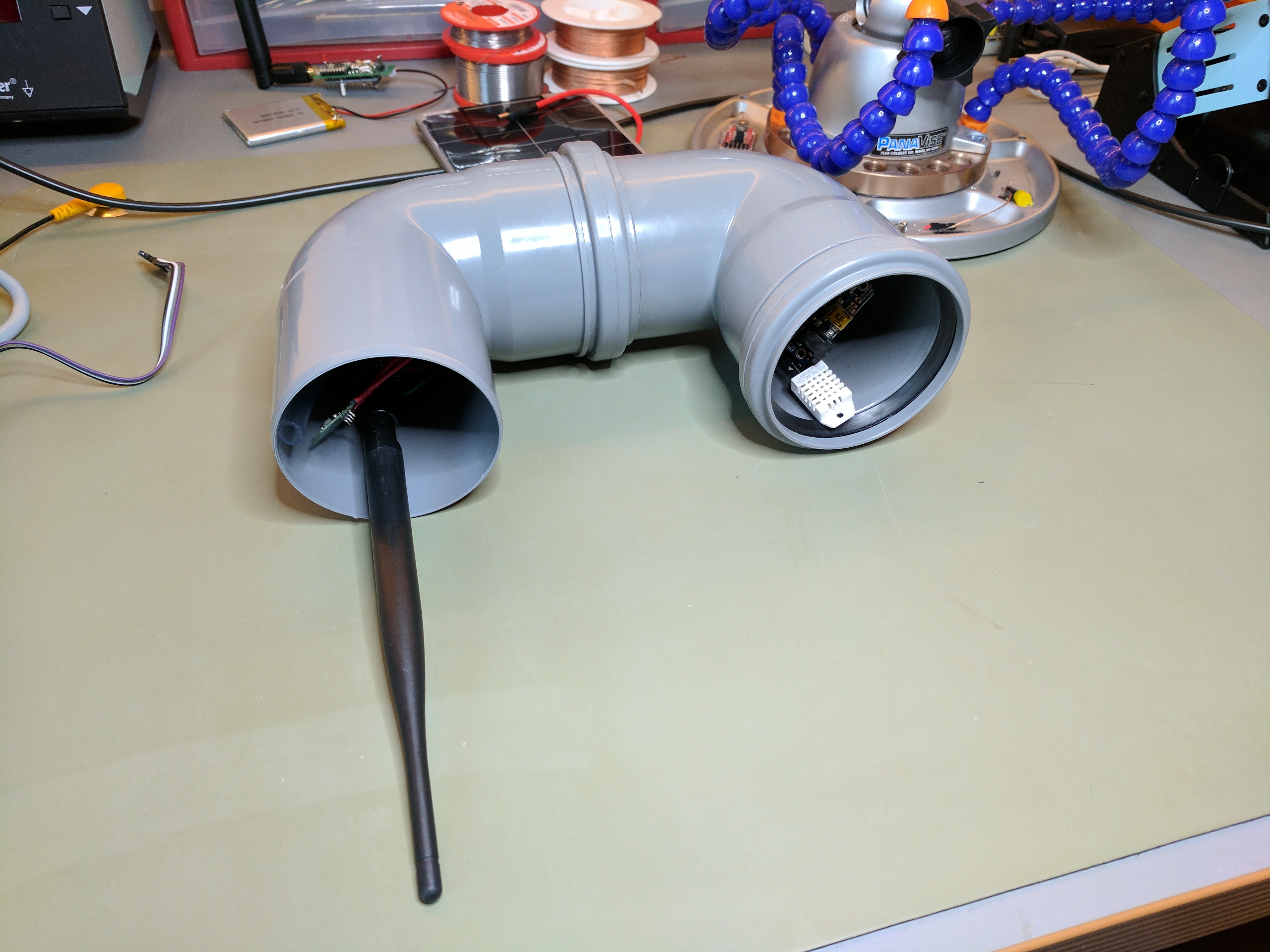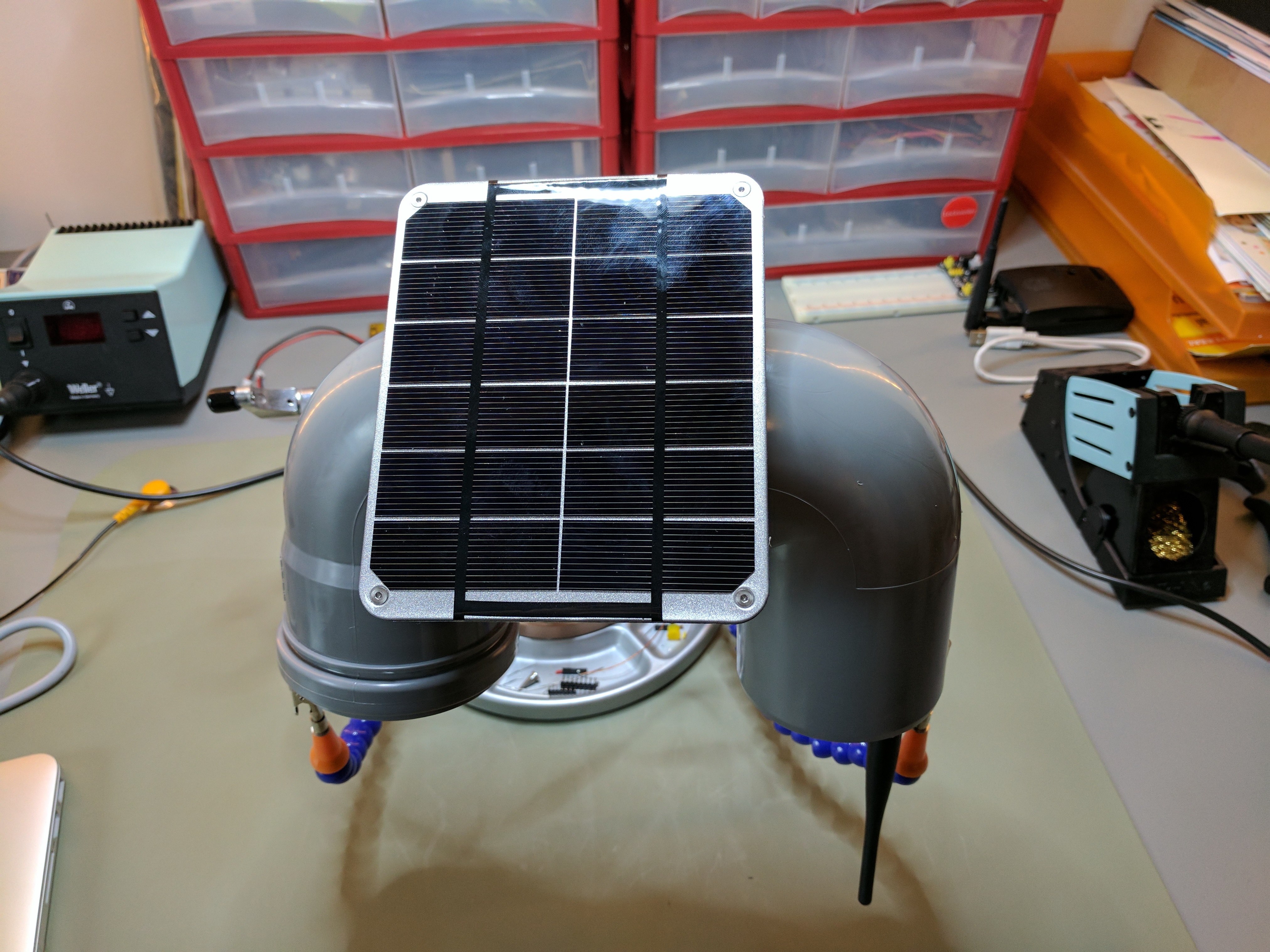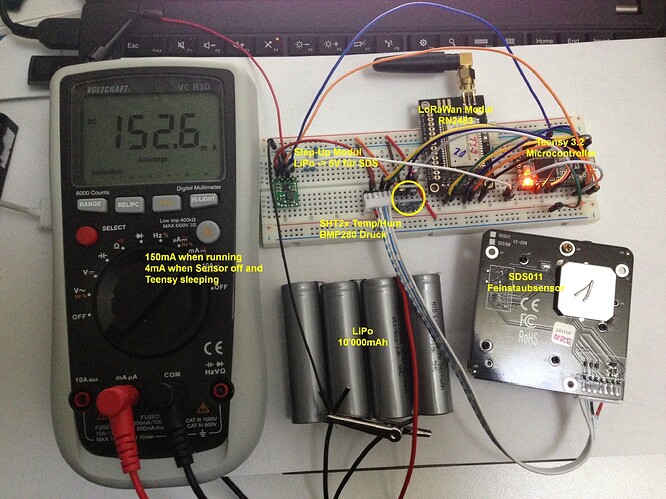first prototype ist working
…great! Do you have a tutorial or something similar to see how it is built?
not jet. I’ve still problems creating a schematic lacking components.
I’ll publish it on github when completed.
till then https://thingspeak.com/channels/227951
Since last weekend there is a solar/akku powered particle sensor with a loarawan/ttn data connection working on the luftdaten.info map. The hardware is a mix from the workshop from Frank (https://www.thethingsnetwork.org/labs/story/workshop-creating-a-ttn-node) and the original luftdaten.info sensor (http://luftdaten.info/feinstaubsensor-bauen/). The software is pretty primitiv as well, sleeping for 10 minutes, spinning up the fan, getting some readings, sending them and going to sleep again (cycle is around 12 minutes total). The data is then processed in Node-RED and transfered via the REST api to the map.
You can find the hardwarelist, code, Node-RED integration, etc. in my github: https://github.com/Freie-Netzwerker/TTN-Node-particulate_matter

Hardware stuff, arduino pro mini, sds011 sensor, am2302 sensor, loratracker pcb, rfm95w, pololu 5v stepup, adafruit solar controler, 6.660mAh akku, solar panel 6V/2W.

Cheapest possible case…

Solar panel attached.
what’s the latest news on projects and interesting parts/developments for (diy) Air Quality nodes/sensors.
somebody developping ? code ? hardware ? tips & tricks ? pictures ? pls share 
Fwiw perhaps our efforts to develop a cheap air quality monitor might be of interest, see http://ourairquality.org/ This design uses a NodeMCU/esp8266 Wifi board and the esp-open-rtos framework. It supports the Plantower PMSx003 family of sensors, and the BME280 and a few other temperature and humidity sensors. A dc3231 real-time-clock is supported as an option. Some features that might differentiate it are:
-
It records all the data from the PM sensor, more that one sample a second. This might help with quickly changing air quality, such as is common from close sources of pollution, and with mapping.
-
It compresses the data and can store a few days of data on the NodeMCU flash, a circular buffer. This allows it to work offline for a few days, or with intermittent Internet access without losing data.
-
The compressed data can be pushed to a server or pulled from the device.
-
It is designed to minimise data manipulation in the data logger and stores the complete raw data from the PM sensor including the crc, and logs data as a journal. This is an attempt to make it more credible on cross examination.
-
A wall mounted case is also described, folded from a single piece of fluted plastic. This is a attempt (perhaps misguided) to make a cheap case.
-
The server side software is not as well developed and still under development.
Hi,
I also have this SDS011 sensor. I like to power it with a boost buck converter by the Lopy 5V supply (when only a lipo is attached) and switch it with an https://www.mouser.com/ds/2/115/2n7000-1163778.pdf that probably has the capabilities to handle the power consumption (up to 500mA). There is a power enable pin at the pytrack.
The boost buck converter I like to use is https://www.banggood.com/DC-DC-Boost-Buck-Adjustable-Step-Up-Step-Down-Automatic-Converter-XL6009-Module-p-1087346.html
Also I like to communicate with the device (optionally): https://www.banggood.com/5-Pcs-3_3V-5V-TTL-Bi-directional-Logic-Level-Converter-For-Arduino-p-951182.html
For the power enable pin at the pytrack, is that suitable to be used for the switching FET (using a proper resistor)?
At all, this would probably enable attaching more power hungry periferials to the lipo (at least for short time).
What do you think?
Thanks, Lothar
